
By Lia Chang
AsAmNews Arts and Entertainment Reporter
Academy Award nominated filmmaker and author Arthur Dong has been having a whirlwind year.
Winning a prestigious award, releasing a new film and starting a new job are just a few of the highlights.
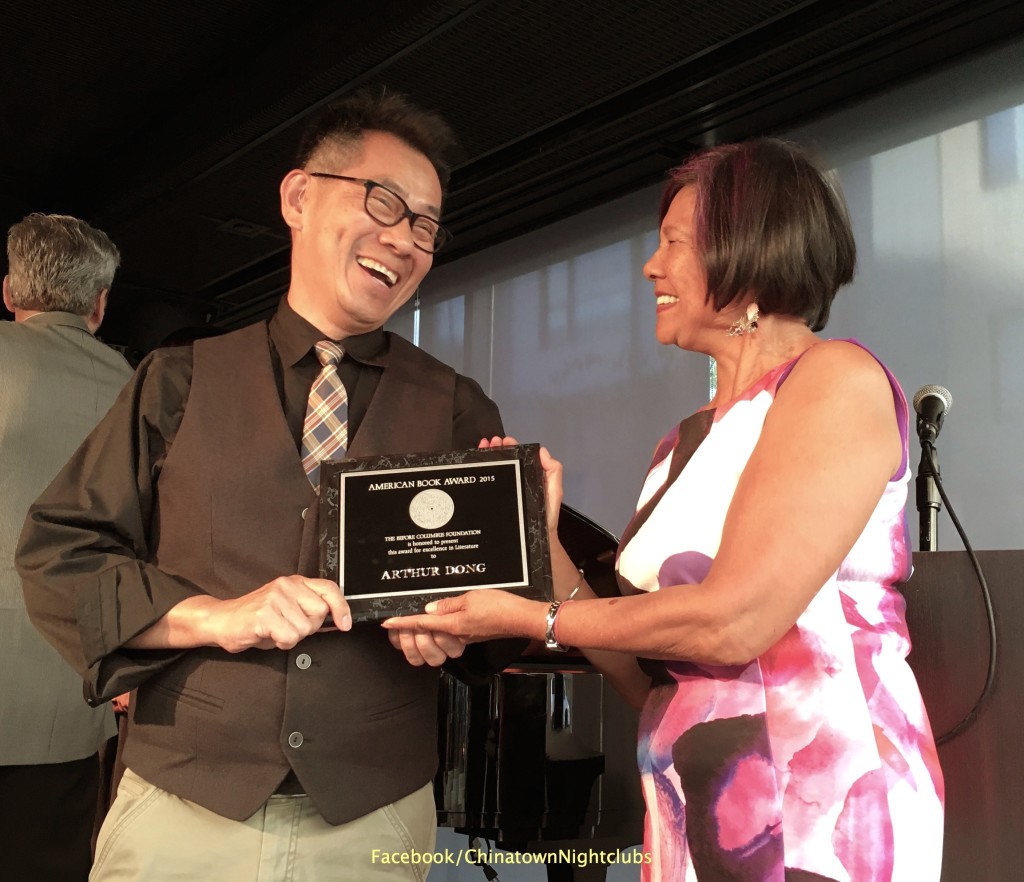
Dong’s new book Forbidden City, USA: Chinatown Nightclubs, 1936-1970 is among this year’s winners of the Thirty-Sixth Annual American Book Awards, presented by the Before Columbus Foundation. He received the honor today at a ceremony at the San Francisco Jazz Center that was broadcast on C-Span.
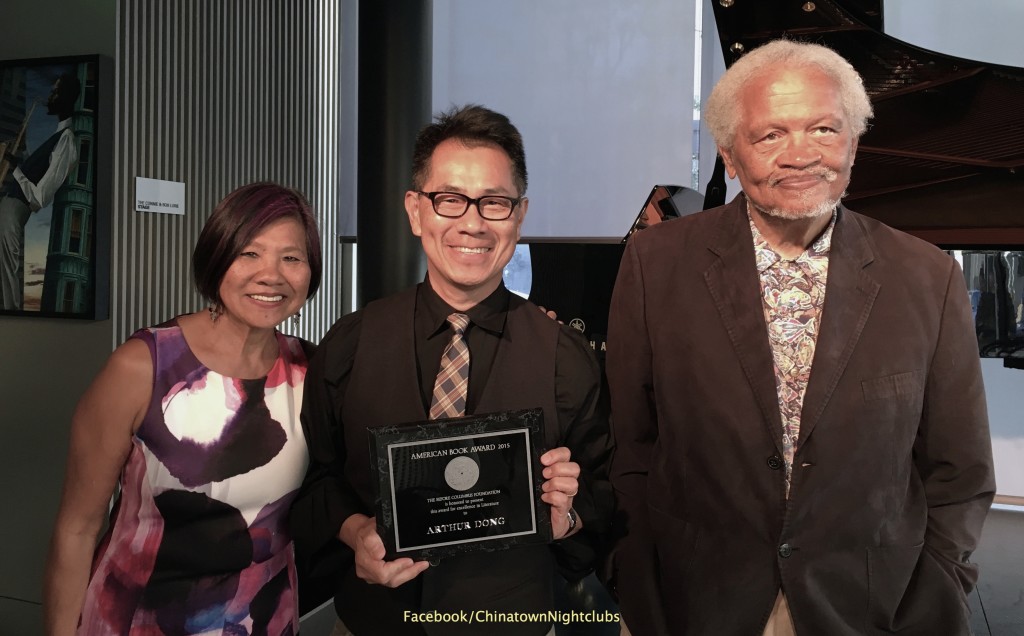
The book has just been released in a glorious hardcover edition (the original paperback edition was published in conjunction with his 2014 exhibit of the same name at the San Francisco Main Library).
LATEST STORIES
Forbidden City, USA: Chinatown Nightclubs, 1936-1970 captures the magic and glamour of the Chinese American nightclub scene, which peaked in San Francisco during World War II. Previously unpublished personal stories, along with over four hundred stunning images and rare artifacts, are presented in this “sexy and insightful chronicle” of Asian American performers who defied racial and cultural barriers to pursue their showbiz dreams.

Dong has been travelling the globe, screening his latest documentary film, The Killing of Fields of Dr. Haing S. Ngor.
Set against the backdrop of Cambodia’s Khmer Rouge reign of terror, The Killing Fields of Dr. Haing S. Ngor chronicles a powerful journey of love, loss and reconciliation. The years encapsulating this horrific period are seen through the eyes of Dr. Haing S. Ngor, who escaped to America and recreated his experiences in The Killing Fields, winning an Oscar® for his first film. He became the de facto worldwide ambassador for truth and justice in his homeland, only to be gunned down in an alley in Chinatown Los Angeles – a case still surrounded by transnational conspiracy theories. The film will screen at the Port Jefferson Documentary Series Stony Brook University in New York (Oct. 26th). Dong will be in attendance at the screenings at the Denver Film Festival (Nov. 12th & 13th); the Austin Asian American Film Festival, (Nov. 14th); and at the Southeast Asian Film Festival in San Francisco, CA (Nov. 21st). Click here for screening updates on The Killing Fields of Dr. Haing S. Ngor.

This month, Dong was honored as an icon in the Gay community for LGBT History Month, joining 31 other icons whose incredible achievements were highlighted here. He’s also got a new job as a Distinguished Professor in Film, a newly created position at Loyola Marymount University, one of the top ten film schools in the country.
Dong was on a three city tour on the East Coast to screen The Killing Fields of Dr. Haing S. Ngor, and I had the opportunity to have lunch with him and our good friend Greg Schanuel, at Jongro BBQ in Koreatown in New York, before the evening’s screening at the International House. As we noshed on spicy green tea noodles and pork belly, we talked about the American Book Award, the new hardcover edition, what it is like to be a father, his “iconic “ status, his new job, his love of teaching documentary filmmaking, showing the film in Cambodia, and his latest projects – a documentary about master tap dancers from the golden age of tap and a remount of his Forbidden City U.S.A. exhibition, commissioned by the Japanese American National Museum for 2018.

Chang: What does it mean to you to receive The American Book Award for Forbidden City, USA: Chinatown Nightclubs, 1936-1970?
Dong:
Unbeknownst to me, my distributor submitted the book to the American Book Awards. This is an award that is given by other authors. It is from your peers. It looks at the full spectrum of diversity in our country and the writers, and awards books that exemplify that diversity. It is a very coveted award among authors because it is from authors. I wrote the book out of passion. I wrote the book because I wanted to do it. I wanted it out there. I wanted to be able to share all of this memorabilia that I collected, and all these great stories that weren’t in the film, Forbidden City, U.S.A. That was really the purpose. I love the stuff so much; I thought other people might love it too. I got a call one day from one of the board members, Genny Lim, who asked if she could reach me somehow. I worked with her before in the past but hadn’t been in contact with her for a long time. She was contacting me to tell me that they had selected the book for an American Book Award.
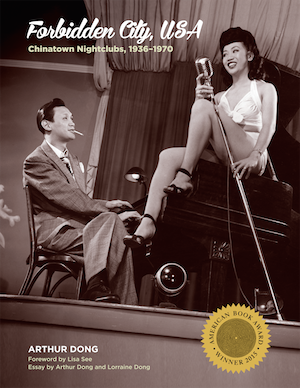 Chang: Why did you choose to publish the book in a hardcover edition?
Chang: Why did you choose to publish the book in a hardcover edition?
Dong:
It was my original vision to have it in hardcover because the story is so glorious and glamorous and magical that I wanted it to be the best it could be. Unfortunately at the time we needed the book and we didn’t have the budget to print a hardcover edition of time the book in America, because it was too expensive. We had an exhibit opening so we needed the books in time for the exhibit. We stuck to an American publisher that was able to deliver paperbacks in time for the exhibit. I was very pleased with the book. People love it. I think it is beautiful in its own way, but there is something about the tangible qualities of a hardcover. It is solid. I’m ecstatic because it is what I wanted from the very beginning. It was my first book and I wanted it to be perfect. I enhanced some of the coloring in the book. There were some issues with the printing here that were not detrimental.
I was also able to add new items to the book- the only color photo taken of a show in the 1940’s, a shot of choreographer Walt Biggerstaff’s original studio where he taught all of the chorus girls in the 1930’s. I was able to put the award on the cover. The book retails for $35 and can be purchased here.
Chang: How does it feel to be an icon?
Dong: Iconic I guess. October 11th is National Coming Out Day and October is LGBT History Month, which annually celebrates and recognizes the notable achievements of LGBT people throughout time. Every day they designate an icon for the day.
It’s not something I’ve ever worked for or strived for or think about. I knew about this a few months ago when they were compiling. The month of October is 31 days, so there are 31 icons. They selected me to be one of the icons and they asked me to send some photos and a bio. I did and forgot about it. The day before, they alerted me that my day was coming up tomorrow. It’s really quite an honor. Some other icons are Angelina Jolie, Mick Jagger, Lady Gaga, Evan Wolfson, the founder and president of Freedom to Marry, a group favoring same-sex marriage in the United States. There are a lot of terrific people on the list so I am honored to be a part of that.

Chang: What drew you to the story of Dr. Haing S. Ngor, the subject of your latest documentary?
Dong: The initial draw was an article in 2010. The article was covering the Khmer Rouge Tribunal in Phnom Penh. The first witness they called on the stand was Kang Kek Iew, or “Duch”. He was the director of the Tuol Sleng interrogation center, aka the torture center, the big torture center where it is estimated that over 200,000 people were executed there. Out of the blue, on the witness stand at this tribunal which was covered by the international press because he was the first key witness and the first person being put on trial, I am paraphrasing what he said, “Yes, Dr. Ngor was killed because he appeared in The Killing Fields.”
Prior to that, when Dr. Ngor was murdered in ’96 and the Los Angeles murder trial happened in 1998, three hoodlums were convicted of robbery and murder. But then Duch, some eleven years later, makes this statement to the whole wide world. It opened up a lot of questions about the murder. It opened up a lot of questions about the trial. It opened up questions about the Khmer Rouge, even though at that time, they were taken down out of power. I read the article and it reminded me about Dr. Ngor, who I knew about but never met. I knew about him because of his film career. I got intrigued by the story. I picked up his book, Survival in the Killing Fields, which is about 500 pages long. It was a fascinating autobiography where he wrote about his life in context to Cambodia, which is the kind of films that I like. There are always two parallel tracks to the story. There’s the larger political social story, but always embodied within a person’s life, and how a person’s life is carried through these political/social movements. That’s how he wrote his book and that’s what got me started.
Chang: You had the opportunity to screen the film in Cambodia. Was this your first time there and how did this come about?
Dong:
It was the second time. The first time I went there was for research for ten days in 2012 before I really began making the film. The US State Department, the US embassy in Phnom Penh heard about this film and felt that it was an important story for the people of Cambodia. It was important for the Embassy’s work in terms of acknowledging the history that occurred there. It also ties in their history with our history through Dr. Ngor’s story, because he came to America and became a citizen here.
They said, “We’ve never done this before, but we’d like to produce a tour of the film, a four city tour in Cambodia.” That’s what happened. It was amazing. They were working in a country, although it was a democracy, that had pretty tight controls over media in Cambodia. We had to create a Khmer version to show in the villages. We were going to do subtitles, which would have been much simpler. If you are going to be showing this in the villages, which we wanted to do, many people can’t read. They are not educated enough to read, so you are going to have to dub the whole film. Luckily, we worked with an organization, Bophana, that went the whole nine yards. They auditioned actors, they got the right voices. They synced it up so it didn’t look too loosey-goosey with their lips. They did a beautiful job. So now I have a Khmer version.

Chang: What did it feel like to bring your movie to a place where these atrocities occurred?
Dong: I was nervous. The first showing was a gala in the most modern theater in Cambodia. It was semi-formal and they invited dignitaries, artists, and cultural leaders. It was official and supported by the Embassy, the State Department as well as the Cambodian government.
I was nervous because, here I am a non-Cambodian telling a story about their country, their culture and their history. I remember when the film first started showing. I always sit in the back of the audience to try and feel the audience. Some of the historical material started showing and I thought they are going to be really bored because they’ve seen all of this. They know all of this. This is a full audience, they were totally quiet. What I am told they were crying and spellbound.
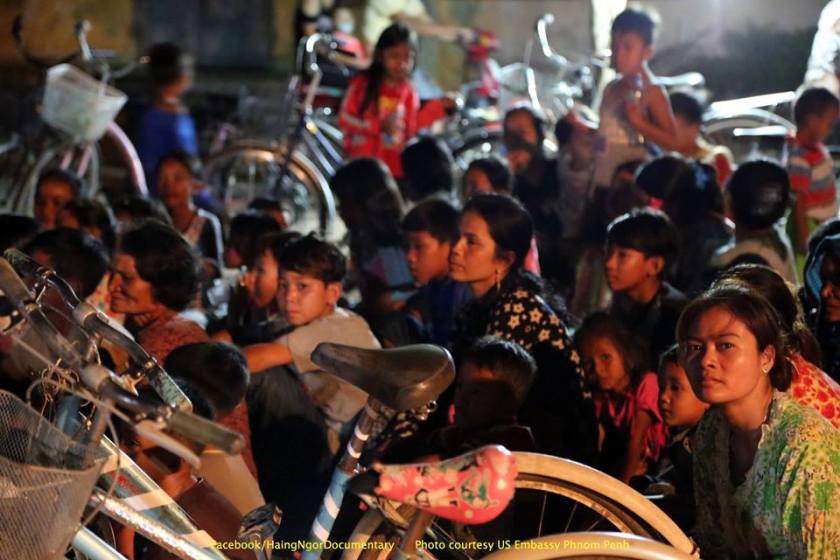
Facebook/HaingNgorDocumentary Photo courtesy of US Embassy Phnom Penh
What I learned from the tour is that although we here in America may have seen some of this material, know the story or know this history, many people in Cambodia don’t. It is a part of history that the government does not endorse in terms of being taught in schools. It is not taught in schools widely. What might be generally known is that something bad happened 40 years ago, it was led by somebody called Pol Pot, who was a communist, and a lot of people died. In terms of the nuances of the political situation, it is not widely taught or discussed. For many people who were watching this film in the villages and in the cities, this may have been the first time they’ve heard about it. And for some of those people who lived through it and survived, the first time they’ve seen their experience on film, and in this way. It was exhilarating. People were really grateful to have this put on screen.
During the Q & A’s, the question I always got was what is your background? Are You Cambodian? In other words, why are you, a non-Cambodian, telling this story?
I’ve been told that the question comes from the doubt that a non-Cambodian would be able to tell their story so authentically. The best compliment I got was when several Cambodian filmmakers and a lot of Cambodians came up to me after the screenings and said they were surprised that I am not Cambodian because it is so sensitive, so real, and so authentic to their voice and story. They were very grateful for that. That is one of the things that I had to be careful about, being an outsider telling the story.
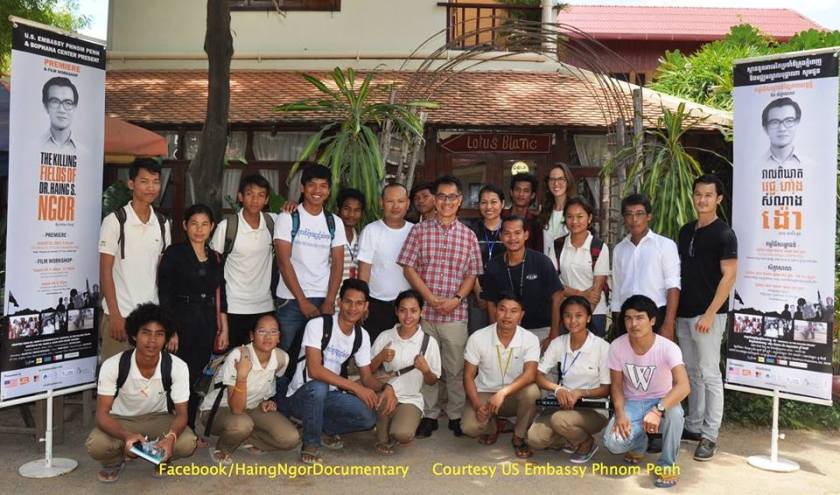
Chang: What is your new job?
Dong: My official title is Distinguished Professor in Film, a newly created position at Loyola Marymount University, which is one of the top ten film schools in the country according to the Hollywood Reporter.
I’ve been teaching documentary film for some 30 years: weeklong workshops, master classes, or just one-day seminars, because I just love what I do and I love sharing what I’ve learned about what I do. It is a thrill to see people excited about the craft because I’m excited about it. I actually taught at Loyola as an adjunct off-and-on whenever I was able to commit to a full semester, but that kind of commitment is hard to make when I’m out there producing a film. Early this year, they called me for a serious talk. They wanted me to help them with developing an MFA documentary program, a graduate program just for documentaries. What an extraordinary prospect I thought. We spent a few months working out a situation where I can take on this opportunity but also continue my work as an independent filmmaker, which is of course exactly what they wanted: a working filmmaker. It ended up a win-win situation. So since April, I’ve been visiting universities across the country that have these types of programs and learning from them. How I can take the best from the best and put that into a two-year program at this university that really wants this to happen? Loyola is fully behind it. We have a new president that is excited about it. A dean that is definitely behind it – it’s his priority to have a documentary program in this department. And, there’s funding. The whole thing is not what I ever imagined to be doing in my life. It is quite a challenge, and an honor, to have the privilege to help shape and nurture a new generation.
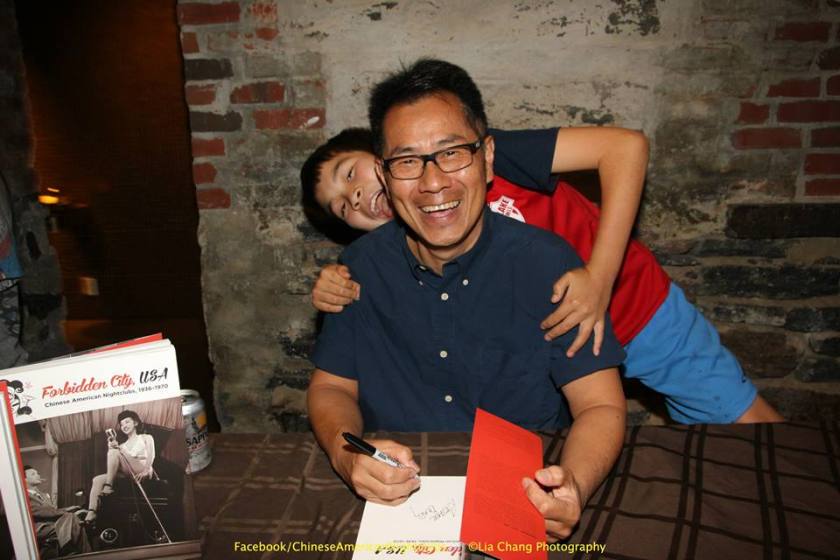
Chang: Speaking of nurturing, how have you handled being a father to your son, Reed?
Dong: It’s crazy. It’s like no other experience I have ever had. I wouldn’t recommend being a parent to everybody. Especially my filmmaking friends. If there is a place in your life to have a child, there’s no substitution. The relationship that is cultivated by being a parent, and being responsible for another life, is daunting and fulfilling. You hear parents say that being a parent is the hardest job in the world and you get absolutely no training. It’s true. Who get’s trained to be a parent?
Chang: What is your latest filmmaking project?
Dong: 20 years ago, my friend Rusty Frank and I received a grant from the National Endowment for the Arts to interview 30 master tap dancers from the golden age of tap dancing, which is about from the turn of the 20th century up to the 1950’s or so. We traveled around the country with this grant, filming and interviewing tap masters like Ruby Keeler, Ann Miller, Fayard Nicholas and Cholly Atkins, and getting their stories. Talking about how they began tap dancing, how tap dancing began in this country and their role in vaudeville, in film, TV or the Broadway stage. They are wonderful heartfelt stories about being in America in the beginning of the 20th Century; and what it meant to be a woman; what it meant to be African American; what it meant to be Asian American.
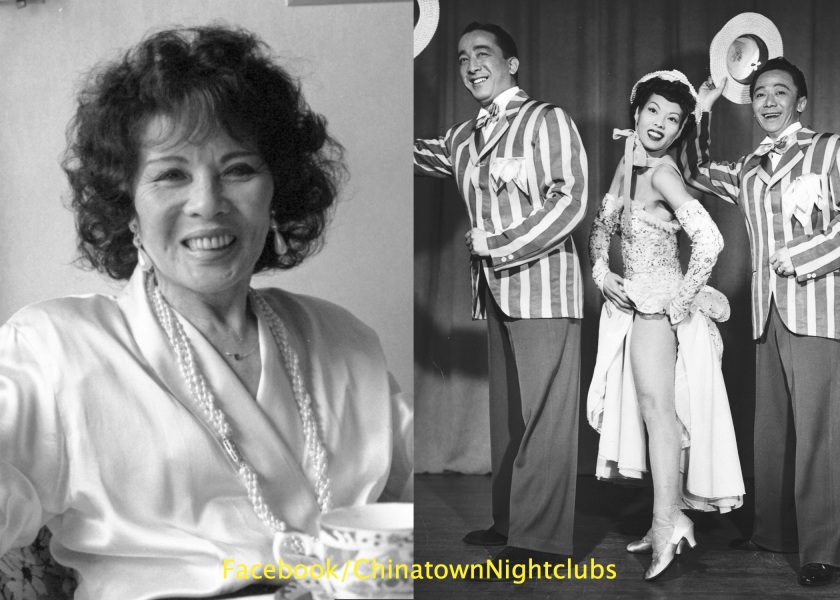
We hear stories from Dorothy Toy and Paul Wing who we also interviewed. Collectively, they told us this really fascinating tapestry of American stories. And because they are tap dancers, they are happy people. They are joyous people. And they’re rhythmic people, and they’re fun people. Rusty and I got these interviews in the can luckily, because soon after, they started leaving us. All but five of them are still with us today. After we got the interviews in the can, both of us got busy. Finally a few months ago, we both said to each other, “I think we have a window of time to start working on this again.” We also got another small grant to start working on it as well. For the past month, Rusty and I have been reliving these interviews. They are hilarious and so fun, but they are also very relevant to issues of today – of gender and equality and racial issues. They still resonate to what’s going on in this country today.
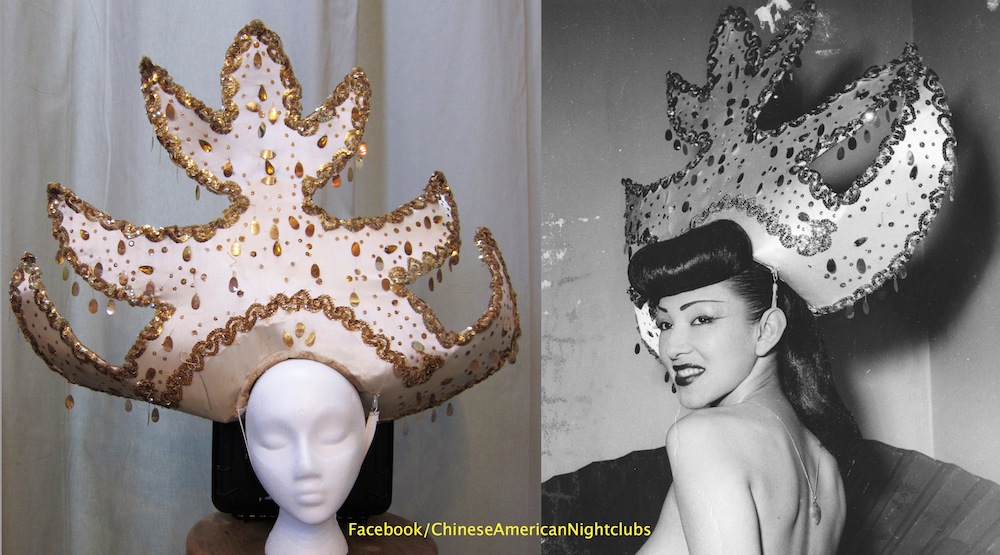
This year has been pretty special with lots of surprises. The Japanese American National Museum has commissioned me to remount the Forbidden City, U.S.A. exhibition at their museum in 2018. In San Francisco, we had 1500 square feet, which felt really tight, but I am getting 6000 square feet. Dorothy Toy just shipped me about fifteen of her costumes including ballroom shoes, tap shoes, accessories from the 1940’s until her last days in the 1970’s. And Dorothy Toy – is Dorothy Takahashi Toy, so her story specifically resonates in that environment. Although the exhibition is about a Pan Asian experience. For example, you have Koreans and Filipinos as well. Because it is the Japanese American Museum, and Dorothy Toy was one of its biggest stars, its wonderful that we have all these costumes from her career. She shipped them in her original traveling cases that she took on the road. We’ve been gathering other costumes since we have the space now. It is part of a largest series. The first program of that series I’m in is being curated by George Takei. So I’m following George Takei.

Below are photos from the International House screening of The Killing Fields of Dr. Haing S. Ngor in New York on October 22, 2015.
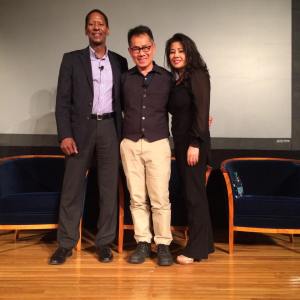
The Killing Fields of Dr. Haing S. Ngor, winner of the Best Documentary Audience Award at the Los Angeles Asian Pacific Film Festival, builds on Arthur Dong’s 30-year track record of creating compelling documentaries that focus on personal stories to examine moments of history, social prejudice, and public policy concerns. As a film student at San Francisco State University, Arthur Dong produced Sewing Woman, his Academy Award nominated short documentary in 1984. The film focused on his mother’s immigration to America from China. Instead of finding an outside distributor for the film, Dong then started his own company, DeepFocus Productions, and serves as its producer, director and writer. His trilogy of films that investigate anti-gay prejudice were released in the DVD collection, Stories from the War on Homosexuality, and features Family Fundamentals, Licensed to Kill and Coming Out Under Fire. His films about Chinese Americans were released in the follow-up collection, Stories from Chinese America, and include Sewing Woman, Forbidden City, U.S.A. and Hollywood Chinese.
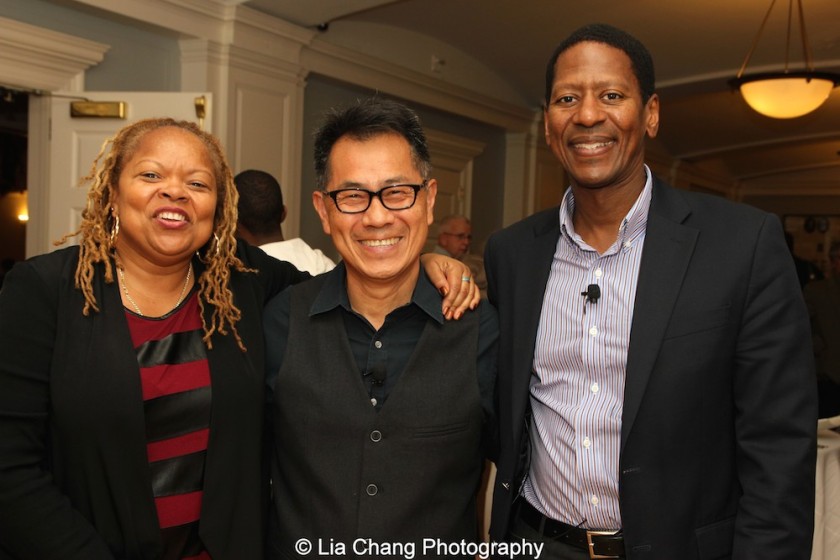
His films have screened theatrically in the U.S., selected for festivals worldwide like Sundance, Toronto, and Berlin, and broadcast globally. Arthur’s film awards include an Oscar® nomination, three Sundance awards, the Peabody, five Emmy nominations, the Berlin Film Festival’s Teddy Award, Taiwan’s Golden Horse Award, and two GLAAD Media awards. He has been named a Guggenheim Fellow in Film and twice selected for the Rockefeller Media Arts Fellowship. He has served on the boards of the Academy of Motion Picture Arts and Sciences, Film Independent, Outfest, and the National Film Preservation Board at the Library of Congress

Lia Chang is an award-winning filmmaker, a Best Actress nominee, a photographer, and an award-winning multi-platform journalist. Lia has appeared in the films Wolf, New Jack City, A Kiss Before Dying, King of New York, Big Trouble in Little China, The Last Dragon, Taxman and Hide and Seek, which will screen at the Philadelphia Asian American Film Festival on November 21st. She is profiled in FebOne1960.com Blog, Jade Magazine and Playbill.com.



























